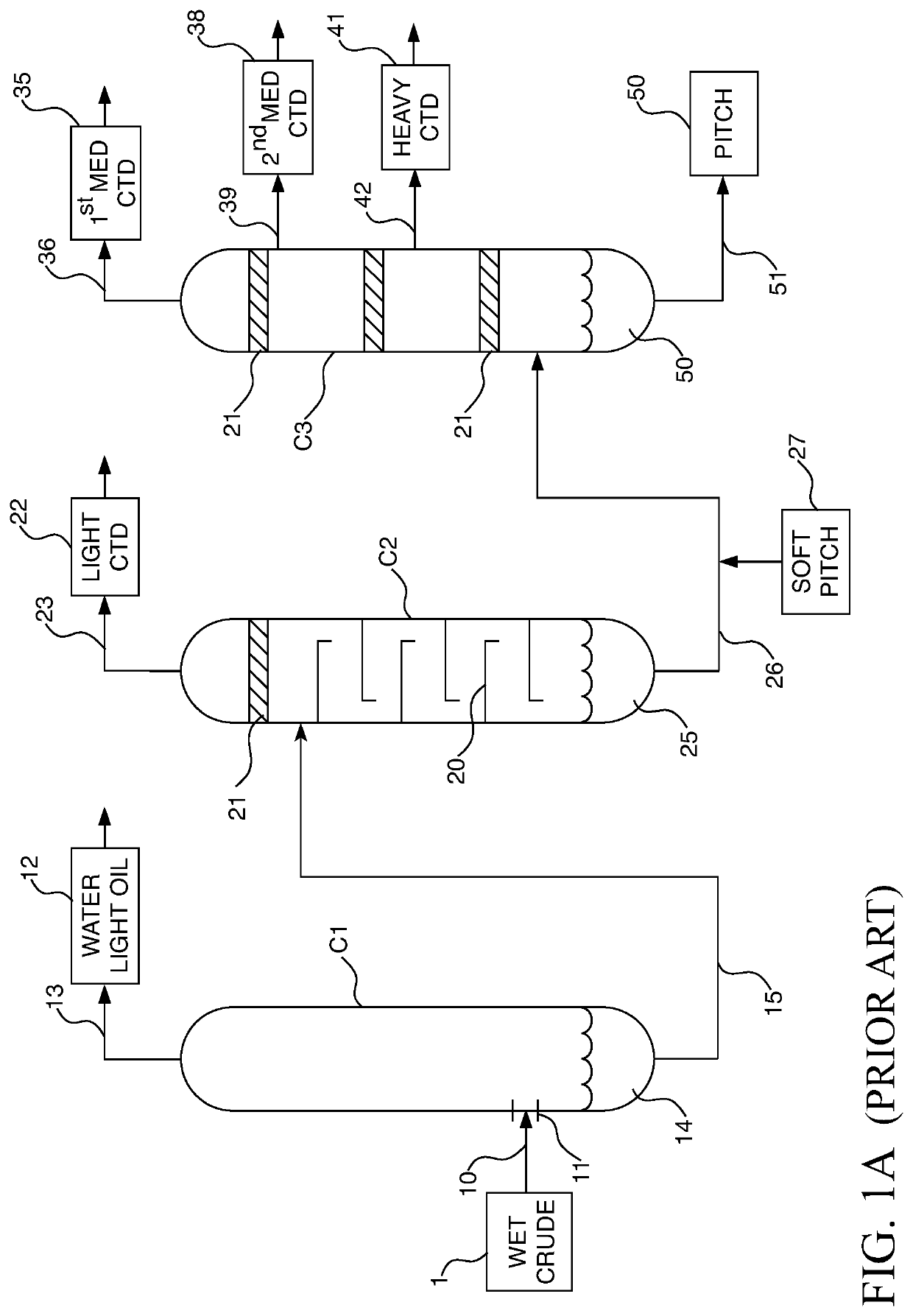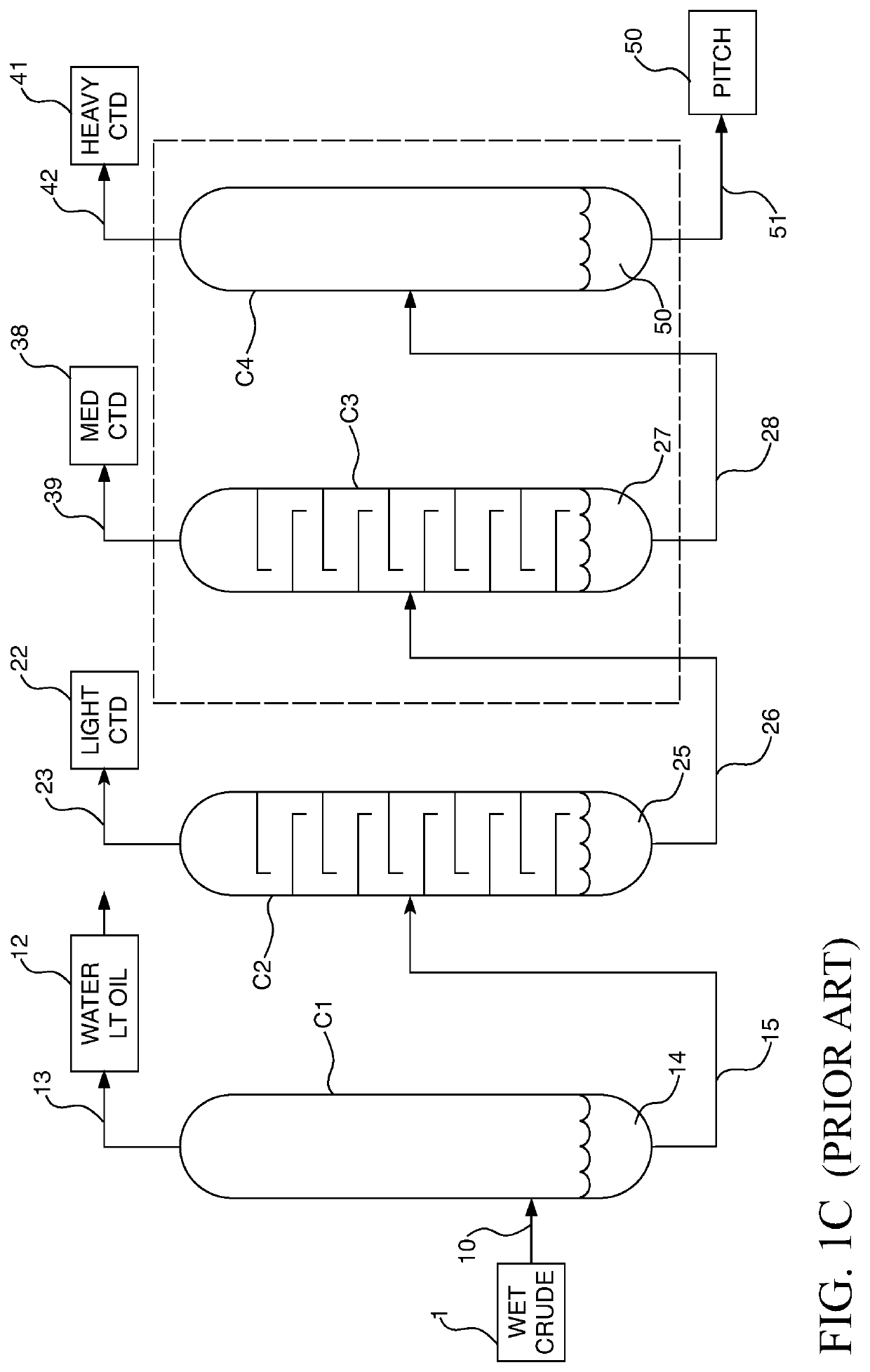Heat Treatment Process and System for Increased Pitch Yields
a heat treatment process and yield technology, applied in the field of carbon based pitch production improvement, can solve the problems of increasing the exposure of countries to these materials, and achieve the effects of increasing the total pitch yield, and reducing the risk of qi level
- Summary
- Abstract
- Description
- Claims
- Application Information
AI Technical Summary
Benefits of technology
Problems solved by technology
Method used
Image
Examples
example 1
Determining Rate of Heavy Distillate Removal
[0101]Certain experiments were performed to determine a maximum flow rate at which heavy distillate 141 may be removed from the third column C3 of the first embodiment of coal tar pitch production system 100 discussed above without impairing the overall performance of the pitch production system 100. Heavy distillate 141 heat treatment is important for the separation of B(a)P as well as to maintain a higher softening points in the resulting pitch 150, such as about 130° C. Mettler.
[0102]Given a goal of increasing pitch yield by 5%, the flow rate required for heat treatment system 300 was calculated as follows. Assuming annual tar throughput is about 300,000 MT / year, 5% of this figure is about 15,000 MT / year, which would be additional pitch required. This rate of 15,000 MT / year divided by an estimated yield of 30% is about 50,000 MT / year, divided by 300 days / year in operation provides 166 MT / day or 7 MT / h for flow rate through the heat trea...
example 2
Determining Reactor Temperatures
[0109]To further design full-scale application of the heat treatment systems 300, some base cases were evaluated, specifically the process heater 314 temperature. Here, temperatures of 420, 445, 471, 497 and 522° C. were evaluated. The lower limit for this evaluation was based on preliminary autoclave results which showed limited reactivity. The upper limit was based on the autoignition temperature of heavy distillate, which have been measured to 542° C. For safety reasons the final reactor temperature has limited to 522° C.
[0110]Previous experiments have shown that heavy distillate can be subjected to temperatures of 550° C. for 5.2 min without forming mesophase or coke. In addition, previous experiments on long retention times provided the following data, shown in Table 10.
TABLE 10TemperatureRetention timeYield %(° C.)(hr)(softening point 115° C.)395415.7401210.6420526.7
[0111]Based on these previous data, kinetic-based simulations were determined in...
example 3
Testing Various Temperatures and Retention Times Coal Tar
[0113]Test runs were performed to assess the feasibility of heat treating heavy distillate to convert it to pitch. These initial experiments were performed at various temperatures between 365 and 510° C. and retention times ranging from 4.5 minutes to 2 hours. A reaction constant was derived from these results. Two additional experiments were performed adiabatically to measure whether the reaction is endothermic, thoroughly insulating the reactor to ensure that the measured temperature of the reactor was not due to the temperature of the oven, but instead of the heavy distillate inside. The experiments were performed using a plug flow reactor.
[0114]Experiments were all performed in the same general manner. Heavy distillate was placed in a feed tank and pumped through the reactor by a rotational pump. The reactor is housed in an oven with a pre-heater, and different sized reactors were also used ranging from 299-330 mL in size....
PUM
| Property | Measurement | Unit |
|---|---|---|
| pressure | aaaaa | aaaaa |
| temperature | aaaaa | aaaaa |
| temperature | aaaaa | aaaaa |
Abstract
Description
Claims
Application Information
 Login to View More
Login to View More - R&D
- Intellectual Property
- Life Sciences
- Materials
- Tech Scout
- Unparalleled Data Quality
- Higher Quality Content
- 60% Fewer Hallucinations
Browse by: Latest US Patents, China's latest patents, Technical Efficacy Thesaurus, Application Domain, Technology Topic, Popular Technical Reports.
© 2025 PatSnap. All rights reserved.Legal|Privacy policy|Modern Slavery Act Transparency Statement|Sitemap|About US| Contact US: help@patsnap.com



